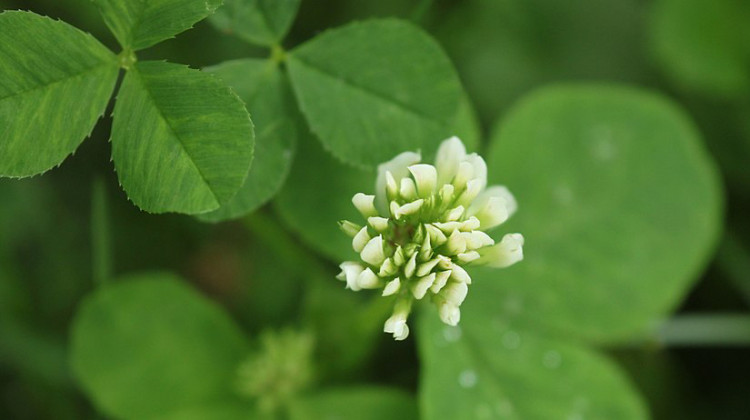
Historically, running buffalo clover did well in areas where bison herds trampled and grazed. It is one of the few native clovers in the eastern U.S.
Provided by USFWSJOHN FLESHER - Associated Press
TRAVERSE CITY, Mich. (AP) — A native plant called running buffalo clover that had been considered extinct is being removed from the federal endangered species list after bouncing back in a half-dozen states east of the Mississippi River, officials said Thursday.
The perennial gets its name from the stolons, or “runners,” that extend from the base of its stems, the U.S. Fish and Wildlife Service said. It needs somewhat open areas and periodic disturbance to thrive. Historically, it did well in areas where bison herds trampled and grazed. Although generally thought of as a Great Plains animal, bison also ranged farther east centuries ago, said Melissa Thomas-Van Gundy, a researcher with the U.S. Forest Service based in Parsons, West Virginia.
Habitat loss and competition from invasive plants such as bluegrass and white clover nearly doomed running buffalo clover, one of the few native clovers in the eastern U.S. Most types that people commonly see in their yards originated in Europe, Thomas-Van Gundy said.
Experts realized running buffalo clover was still around after a population was found in West Virginia in 1983. Four years later, the species was declared endangered and given federal protection.
Managers of federal, state and locally owned lands have provided more habitat, including tree plantings in woodlands where older trees have been killed by the emerald ash borer. Illegal off-road vehicle traffic has been reduced on national forest lands and invasive species have been removed.
Logging also has benefited the clover in some forested areas, including one in West Virginia where it has sprung up along roads where downed trees are dragged, Thomas-Van Gundy said. Mowing and cattle grazing also can provide helpful moderate disturbance, according to the Fish and Wildlife Service.
Agencies and volunteers have kept watch for the clover, sometimes leading to new finds. It's now known to grow in 175 places in Indiana, Kentucky, Missouri, Ohio, Pennsylvania and West Virginia. The Fish and Wildlife Service says 88 of the known populations are on public lands or private property with conservation agreements.
“The recovery of the running buffalo clover is a great example of the success of conservation partnerships,” said Charles Wooley, director of the service's Great Lakes region. “We applaud the efforts of our state, federal and private conservation partners who came together to ensure its long-term future and who persevered in searching for and discovering new populations.”
The service proposed dropping the clover from the endangered list in 2019. The move will take effect Sept. 6. The agency and partners will monitor the clover's status for at least five years.
 DONATE
DONATE






 Support WFYI. We can't do it without you.
Support WFYI. We can't do it without you.